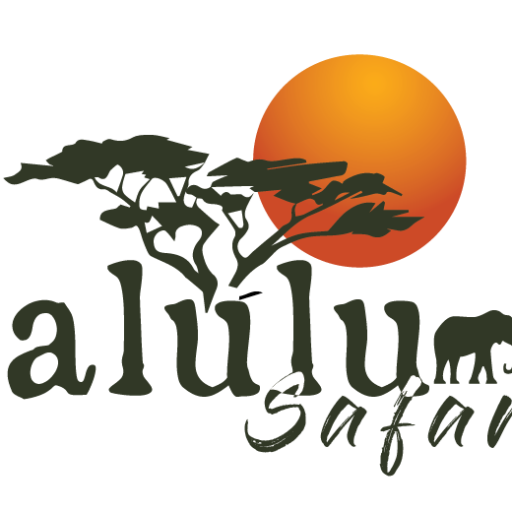The Best Time to Visit Zanzibar: A Guide to the Island’s Climate and Weather Patterns
Zanzibar, the enchanting island off the coast of Tanzania, is a paradise known for its pristine beaches, rich culture, and diverse marine life. Whether you’re planning a romantic getaway, a family holiday, or an adventure-filled escape, the timing of your visit can significantly impact your experience. From the best weather conditions to avoiding crowds, here’s everything you need to know about the best time to visit Zanzibar.
Zanzibar’s Tropical Climate: What to Expect Year-Round
Zanzibar experiences a tropical climate, with warm temperatures and two main seasons: the dry season and the rainy season. The island’s weather is influenced by its proximity to the equator, which means it enjoys sunshine year-round, making it a fantastic destination any time of the year. However, understanding Zanzibar’s climate patterns can help you decide the best time to visit based on your preferences for weather, activities, and avoiding the crowds.
1. Dry Season: June to October – Ideal for Beach Lovers and Adventure Seekers
The dry season in Zanzibar runs from June to October, and it’s considered the best time to visit the island. Here’s why:
- Perfect Weather: During these months, Zanzibar enjoys sunny, clear skies with minimal rainfall. Temperatures hover around 26°C to 31°C (79°F to 88°F), making it an ideal time to hit the beaches, swim, or enjoy water activities like snorkeling and diving.
- Great for Safari & Hiking: If you’re combining your beach holiday with a safari or Kilimanjaro trek, the dry season offers clear skies and pleasant weather, which is perfect for wildlife viewing and outdoor adventures.
- Low Humidity: Compared to the rainy season, the humidity is lower, which makes the climate much more comfortable for exploring the island’s attractions, including Stone Town, spice farms, and the Jozani Forest.
- Crowd-Free Experience: While this is the peak tourist season, Zanzibar’s beaches and main attractions are large enough that you can still find peaceful spots to enjoy, especially if you venture beyond the busiest areas like Nungwi and Stone Town. However, booking your accommodation in advance is recommended.
2. Short Rainy Season: November to December – A Quiet Time with Lower Prices
The short rainy season, which lasts from November to December, can be a good option for travelers seeking a quieter, more affordable experience.
- Lower Prices: Since the rain showers tend to be short and intermittent, this period is a great time to score better deals on accommodation, tours, and activities. If you’re looking to save money while avoiding the large crowds, this is a sweet spot to visit.
- Occasional Showers: Expect brief but heavy rains, typically in the afternoon or evening. The weather is still warm with temperatures ranging from 25°C to 30°C (77°F to 86°F), and the island remains lush and green, making it a beautiful time for nature lovers and photographers.
- Less Crowded: With fewer tourists, you’ll have more opportunities for peaceful exploration of Zanzibar’s pristine beaches, cultural attractions, and historical landmarks. It’s an ideal time for those seeking a tranquil and intimate Zanzibar experience.
3. Long Rainy Season: March to May – Best for Budget Travelers
The long rainy season lasts from March to May, and this is considered the least popular time to visit Zanzibar. However, it can still be a worthwhile choice for certain types of travelers.
- Heavy Rains: The weather can be unpredictable, with prolonged rain showers, especially from April to May. However, the rains are often intermittent, meaning you’ll have dry spells in between the downpours.
- Lower Prices & Fewer Tourists: One of the biggest advantages of visiting Zanzibar during this period is the low cost of accommodation and fewer tourists. You can explore the island without the crowds and enjoy significant discounts on tours and hotels.
- Humidity: Due to the rains, humidity levels tend to be higher, making it less comfortable for extended outdoor activities. If you’re looking for a beach holiday or active outdoor excursions, this may not be the best time.
- Perfect for Rainy Season Deals: For travelers who don’t mind occasional showers and prefer to take advantage of low-season pricing, visiting Zanzibar during the rainy months can offer a quieter and more budget-friendly experience.
4. The Shoulder Seasons: January and February – Warm & Inviting
Between the two rainy seasons, January and February offer a great middle ground. These months are often described as the “shoulder season” due to the favorable weather conditions:
- Warm, Sunny Days: Temperatures hover around 28°C to 32°C (82°F to 90°F), with little to no rain, making it a perfect time for beach activities and exploring the island’s cultural attractions.
- Great for Snorkeling & Diving: The seas are calm, and visibility is excellent, making this the ideal time for underwater activities such as snorkeling and diving in Zanzibar’s famous coral reefs. This is also the best time to visit Mnemba Island and enjoy the vibrant marine life.
- Festive Spirit: January and February offer a lively, festive atmosphere, with local cultural events, festivals, and celebrations, such as Sauti za Busara (an annual music festival) in February. It’s a great time to experience the island’s rich culture alongside your beach holiday.
- Moderate Crowds: Although it’s not as busy as the peak season (June to October), January and February do see a higher influx of tourists due to school holidays. However, it’s still possible to enjoy a relatively peaceful experience, especially if you avoid the most popular spots.
How to Avoid Crowds in Zanzibar
Zanzibar is a popular destination, but there are still ways to avoid the crowds and enjoy a more intimate experience:
- Travel During the Shoulder Season: As mentioned, the months of January to February and November to December are perfect for avoiding the large crowds while still enjoying good weather.
- Visit Lesser-Known Beaches: Instead of heading to the busiest beaches like Nungwi or Kendwa, explore quieter areas like Jambiani, Paje, and Kizimkazi, where you’ll find peaceful retreats and fewer tourists.
- Explore Off-Peak Attractions: Stone Town can be quite crowded, but early morning visits to landmarks like the House of Wonders or Spice Farms will allow you to enjoy the sights before the crowds arrive.
- Book in Advance: If you’re traveling during the peak season (June to October), be sure to book your accommodation and tours well in advance to secure the best options.
Conclusion: The Best Time for You to Visit Zanzibar
Ultimately, the best time to visit Zanzibar depends on your preferences for weather, activities, and crowds:
- For the best weather and outdoor activities, the dry season from June to October is perfect, especially for beach lovers and adventure seekers.
- If you’re after a quieter, more budget-friendly experience, consider visiting during the short rainy season (November to December) or the shoulder seasons (January and February).
- For budget-conscious travelers, the long rainy season (March to May) offers great deals, though expect some rain and higher humidity.
No matter when you choose to visit, Kalulu Safaris can help you make the most of your Zanzibar holiday, ensuring that you experience the island’s hidden gems, rich culture, and natural beauty. Ready to plan your Zanzibar adventure? Let us guide you to the perfect time and experience for your tropical escape!

